Related Research Articles

Fife is a council area, historic county, registration county and lieutenancy area of Scotland. It is situated between the Firth of Tay and the Firth of Forth, with inland boundaries with Perth and Kinross and Clackmannanshire. By custom it is widely held to have been one of the major Pictish kingdoms, known as Fib, and is still commonly known as the Kingdom of Fife within Scotland. A person from Fife is known as a Fifer.

The Royal School of Needlework (RSN) is a hand embroidery school in the United Kingdom, founded in 1872 and based at Hampton Court Palace since 1987.

Wemyss Castle is situated in Wemyss on the sea cliffs between the villages of East Wemyss and West Wemyss in Fife, Scotland.

St Andrews is a town on the east coast of Fife in Scotland, 10 miles southeast of Dundee and 30 miles northeast of Edinburgh. St Andrews had a recorded population of 16,800 as of 2011, making it Fife's fourth largest settlement and 45th most populous settlement in Scotland.

Kirkcaldy is a town and former royal burgh in Fife, on the east coast of Scotland. It is about 11.6 miles (19 km) north of Edinburgh and 27.6 miles (44 km) south-southwest of Dundee. The town had a recorded population of 49,460 in 2011, making it Fife's second-largest settlement and the 12th most populous settlement in Scotland.
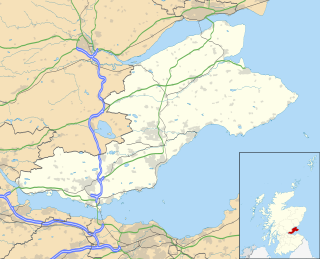
Cupar is a town, former royal burgh and parish in Fife, Scotland. It lies between Dundee and Glenrothes. According to a 2011 population estimate, Cupar had a population around 9,000, making it the ninth largest settlement in Fife, and the civil parish a population of 11,183. It is the historic county town of Fife, although the council now sits at Glenrothes.

The University of Dundee is a public research university in Dundee, Scotland. It is a red brick university, founded as a university college in 1881 with a donation from the prominent Baxter family of textile manufacturers. The institution was, for most of its early existence, a constituent college of the University of St Andrews alongside United College and St Mary's College located in the town of St Andrews itself. Following significant expansion, the University of Dundee gained independent university status by royal charter in 1967 while retaining much of its ancient heritage and governance structure.

Burntisland is a former royal burgh and parish in Fife, Scotland, on the northern shore of the Firth of Forth. According to the 2011 census, the town has a population of 6,269.

Methil is an eastern coastal town in Scotland. It was first recorded as "Methkil" in 1207, and belonged to the Bishop of St Andrews. Two Bronze Age cemeteries have been discovered which date the settlement as over 8,000 years old. Famous for its High Street having the most pubs per mile in Scotland, it was part of its own barony in 1614 and also part of the former burgh of Buckhaven and Methil. This burgh existed between 1891 and 1975. It is situated within a continuous urban area described as Levenmouth.

Ceres is a village in Fife, Scotland, located in a small glen approximately 2 miles (3 km) over the Ceres Moor from Cupar and 7 mi (11 km) from St Andrews. The former parish of that name included the settlements of Baldinnie, Chance Inn, Craigrothie, Pitscottie and Tarvit Mill.

Candace Wheeler, often credited as the "mother" of interior design, was one of America's first woman interior and textile designers. She is noted for helping to open the field of interior design to women, supporting craftswomen, and for encouraging a new style of American design. She founded both the Society of Decorative Art in New York City (1877) and the New York Exchange for Women's Work (1878).
Levenmouth is a conurbation comprising a network of small settlements on the north side of the Firth of Forth, in Fife on the east coast of Scotland. It consists of three principal coastal towns; Buckhaven, Leven and Methil, and a number of smaller towns, villages and hamlets inland. The industrial towns of Buckhaven and Methil lie on the west bank of the River Leven, and the resort town of Leven is on the east bank. The "Bawbee Brig" links the two sides of the river. Historically, Buckhaven and Methil were joined together as one burgh, while Leven was separate. The area had an estimated population of 37,238 in 2006.

Buckhaven is a town on the east coast of Fife, Scotland, on the Firth of Forth between East Wemyss and Methil. Buckhaven is on the Fife Coastal Path, and near to Wemyss Caves and Largo Bay.
Coaltown of Balgonie is a village of 1059 people in south central Fife. It is located on the B9130 road in the heart of Fife, next to the new town of Glenrothes in east-central Scotland. Coaltown has a Scotmid (Co-op) shop with a post office, a pub, a bowling green, a village hall, and a church.
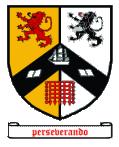
Buckhaven High School was a six-year co-educational non-denominational comprehensive school in Buckhaven, Fife, Scotland. In the past, Buckhaven was Levenmouth's high school for pupils who passed their qualifying exam. The school's motto was Perseverando.
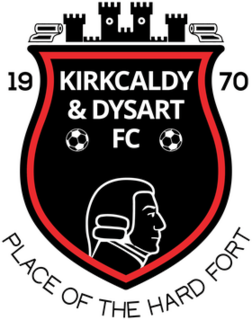
Kirkcaldy & Dysart Football Club are a Scottish football club based in Kirkcaldy, Fife. The club renamed from Kirkcaldy YM JFC after a merger with Dysart AFC in 2019.
West Wemyss is a village lying on the north shore of the Firth of Forth, in Fife, Scotland. According to the 2007 population estimate, the village has a population of 237. The village was granted burgh of barony status in 1511, bearing the name from the Wemyss family who lived in Wemyss Castle.
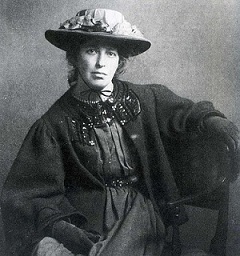
Jessie Newbery was a Scottish artist and embroiderer. She was one of the artists known as the Glasgow Girls. Newbery also created the Department of Embroidery at the Glasgow School of Art where she was able to establish needlework as a form of unique artistic design. She married the director of the Glasgow School of Art, Francis Newbery, in 1889.

Fife Heritage Railway is a heritage railway run by The Kingdom of Fife Railway Preservation Society, formed in 1992, which aims to showcase the heritage of the railways of Fife and restore locomotives and rolling stock that once worked in Fife. They are based in Levenmouth, Scotland which has been their base since 2003.
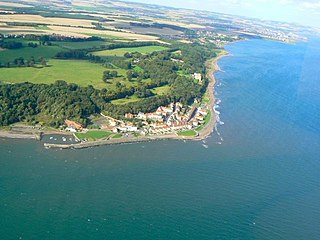
Wemyss is a civil parish on the south coast of Fife, Scotland, lying on the Firth of Forth. It is bounded on the north-east by the parish of Scoonie and the south-west by the parish of Kirkcaldy and Dysart and its length from south-west to north-east is about 6 miles. Inland it is bounded by Markinch and its greatest breadth is 2+1⁄4 miles.
References
- 1 2 "Wemyss School of Needlework". The List. Retrieved 2019-01-28.
- ↑ "Wemyss School of Needlework: stitching since 1877". Avocado Sweet. 2016-08-10. Retrieved 2019-01-28.
- ↑ "Fabric of the nation in safe hands". HeraldScotland. 1995-06-30. Retrieved 2019-01-28.
- ↑ "Delving into the past ..." Fife Today. JPIMedia Ltd. 2014-01-29. Retrieved 2019-01-28.
- ↑ "A needlework hidden gem in Fife". The Scottish Farmer. Newsquest Media Group Ltd. 2016-07-23. Retrieved 2019-01-28.
- ↑ "M.B.E." Supplement to the London Gazette (53893). 1994-12-30. p. 16. Retrieved 2019-01-29.


